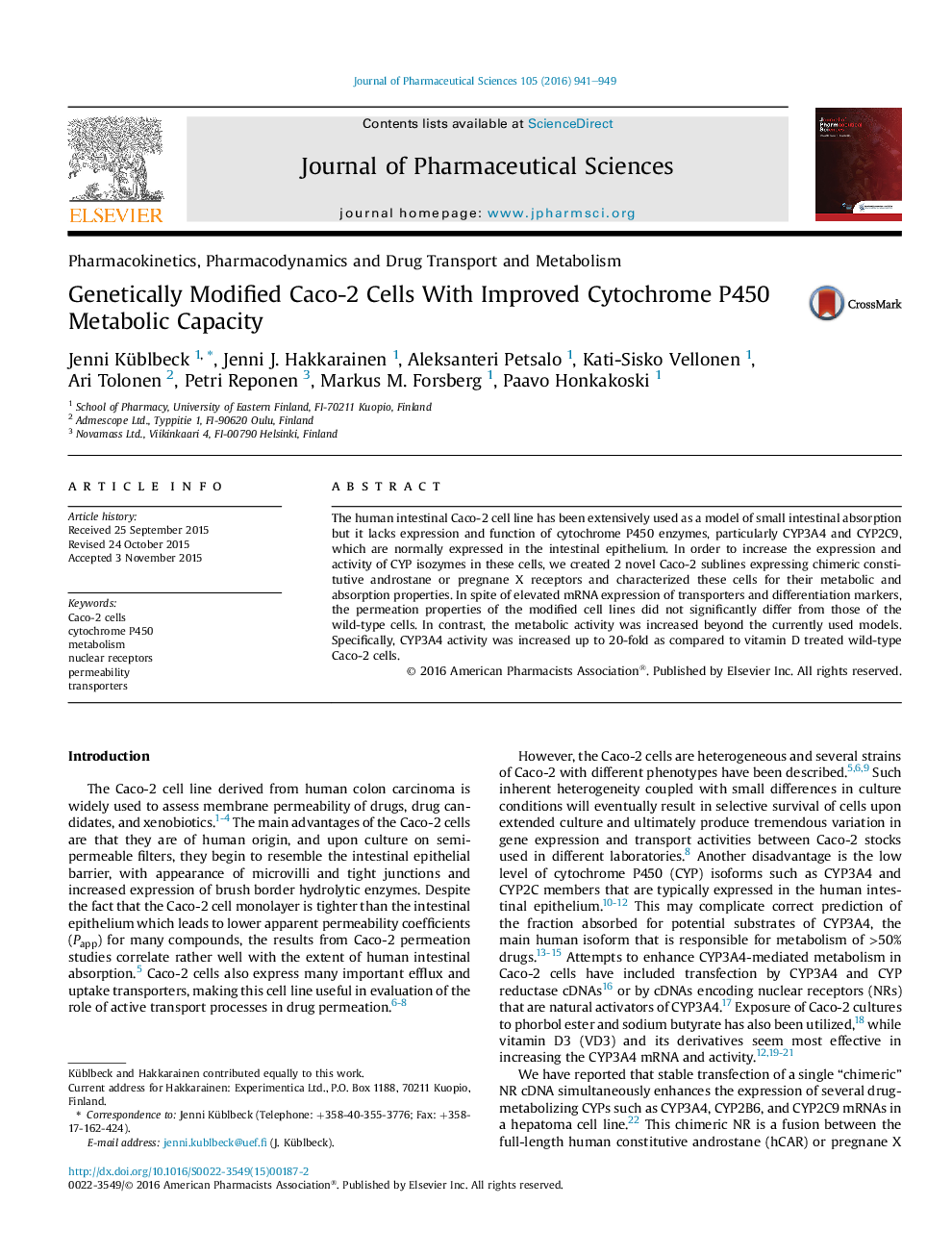| Article ID | Journal | Published Year | Pages | File Type |
|---|---|---|---|---|
| 2484299 | Journal of Pharmaceutical Sciences | 2016 | 9 Pages |
Abstract
The human intestinal Caco-2 cell line has been extensively used as a model of small intestinal absorption but it lacks expression and function of cytochrome P450 enzymes, particularly CYP3A4 and CYP2C9, which are normally expressed in the intestinal epithelium. In order to increase the expression and activity of CYP isozymes in these cells, we created 2 novel Caco-2 sublines expressing chimeric constitutive androstane or pregnane X receptors and characterized these cells for their metabolic and absorption properties. In spite of elevated mRNA expression of transporters and differentiation markers, the permeation properties of the modified cell lines did not significantly differ from those of the wild-type cells. In contrast, the metabolic activity was increased beyond the currently used models. Specifically, CYP3A4 activity was increased up to 20-fold as compared to vitamin D treated wild-type Caco-2 cells.
Related Topics
Health Sciences
Pharmacology, Toxicology and Pharmaceutical Science
Drug Discovery
Authors
Jenni Küblbeck, Jenni J. Hakkarainen, Aleksanteri Petsalo, Kati-Sisko Vellonen, Ari Tolonen, Petri Reponen, Markus M. Forsberg, Paavo Honkakoski,
